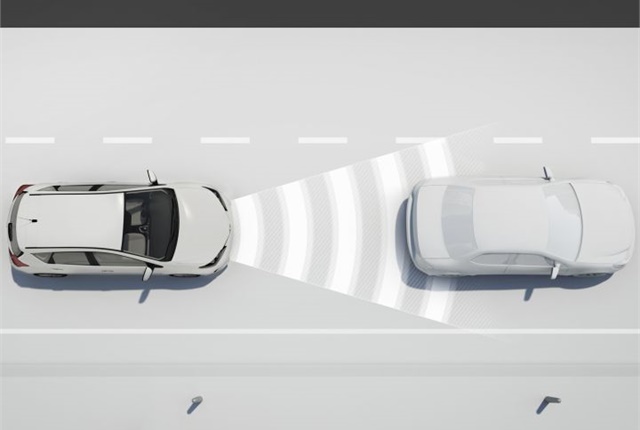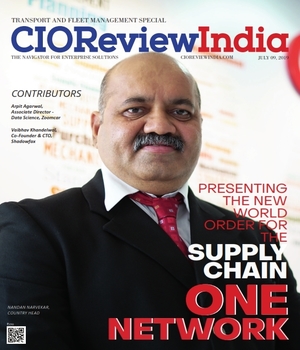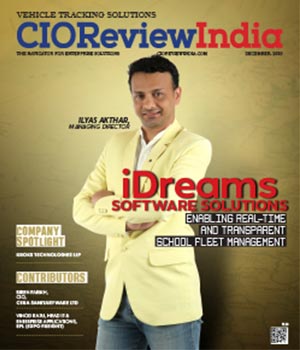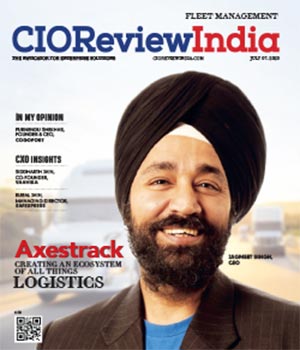
2017 Fleet Management Tech Trends
CIOReview Team | Thursday, 27 April 2017, 10:37 IST
 Reach into your pocket or purse. Feel that smartphone? Do you realize that your hand now rests on a computer that is more powerful than the one used to land the Apollo 11? And not just slightly more powerful. The Apollo 11 guidance computer hit processor speeds of about .043 MHz. The iPhone 5 – now defunct by not one, but two iterations – reaches speeds of around 1.3 GHz – more than 30,000 times the speed of the Apollo guidance computer. 1
Reach into your pocket or purse. Feel that smartphone? Do you realize that your hand now rests on a computer that is more powerful than the one used to land the Apollo 11? And not just slightly more powerful. The Apollo 11 guidance computer hit processor speeds of about .043 MHz. The iPhone 5 – now defunct by not one, but two iterations – reaches speeds of around 1.3 GHz – more than 30,000 times the speed of the Apollo guidance computer. 1
In 1951, “magnetic tapes” usurped punch cards as the digital storage du jour. These 1,200-foot-long tapes held a maximum of 3 MB. At the time of this writing, for $700, you can purchase a USB storage device that is 350,000 times greater in capacity (1TB) than prehistoric tape drives – and carry said drive in your pocket. And if you don’t want to shell out $700, you can always head out to your local Walmart and trump the 50’s monstrosity by a paltry 43,000 times with a 128GB USB drive, currently available in-store for thirty bucks.
While fleet management tech has not evolved quite so rapidly or to the extent that some other technologies have, things in the realm of field mobility tech have changed, and relatively dramatically over the years.
Fleet Management Tech in Review
Field Technologies Magazine recently released its Field Mobility 2017 report, which consists of a look at the year ahead in field technologies and fleet management tech, as well as user sentiment about these developments. In September of this year, we posted about similar research conducted by Fleet Technologies Magazine in their 2015 report, Field Mobility 2016. Both reports gauge technology interests and intentions among their subscribers. Today, we compare the two reports.
Fleet Management Hardware Trends
In September, we divided fleet management tech trends into two categories: software trends and device (hardware) trends. In the realm of device technology, FT’s2016-17 survey respondents continue to implement consumer-gradehandhelds/smartphones over similar “rugged” devices – and in compelling fashion. In the most current report, responses showed an 8% increase in workforce utilization of consumer-grade handhelds/smartphones (49% last year, 57% this year). Conversely, interest in “rugged” smartphones/handhelds declined, with usage dropping from 20% to 17%.
On a related note, handheld/smartphone use is a trend that most users plan to retain in future rollouts, as 74% of current smartphone/handheld users indicate an intention to stick with handhelds/smartphones at their next refresh. This was only marginally above last year’s report of 73%.
Tablet users also seem to be continuing the consumer-grade trend aggressively. FT’s current report shows that 51% of respondents currently use consumer-grade tablets (7” and 10”) compared to only 42% at last report. And those currently using tablets for field duties seem to be the most committed of the bunch with 95% of current tablet users intending to continue use of tablets at their next refresh (up from 92% in FT’s previous report).
Fleet Management Software Trends
While device-related trends seem to be continuing on the same trajectory established in the previous FT report, field management software trends seem to be shifting. Of the three leading operating systems (Windows OS, iOS, and Android), iOS has seen a surprisingly large bump in field service usage, moving from 12% adoption to 26%. This has clearly eaten away at the hold that Windows has (38% down to 31%), and it effectively bumps Android from its second-place spot among single-OS shops, down to 15% from 18% in FT’s last report.
The most desired key software functionalities remain the same in FT’s most recent report compared to their last report, those functionalities being:
• Dispatch/work order assignment (72% then vs. 67% now)
• Service/work order assignment (68% then vs. 66% now)
• Basic scheduling (50% then vs. 62% now)
• Routing/navigation (50% then vs. 50% now)
Also noteworthy in this most recent report is the selection criteria for field service software:
• Ability to integrate with back-office systems
• Ease of use
• Ability to work offline
• Ability to customize
• Scalability
TouchStar’s FleetAtlas Framework speaks to all five of these selection criteria. Read more about TouchStar’s FleetAltas Framework.
One surprising software shift took place in shops utilizing a cloud-based software solution, in that only 47% of respondents in FT’s most current report use a cloud-based solution compared to 62% in last year’s report. Previous to that (two years ago), cloud utilization was also at 47%. The 47%-62%-47% pro-/regression might warrant further research for those strongly considering the switch, but one thing that is for sure is the growing motivation behind the switch. FT reports that 66% of current cloud users made the switch because it is “simple to deploy.” This, compared to 49% at last report. Want to know what to expect from cloud-based solutions compared to traditional software licensing? Read more about Cloud vs. Traditional Fleet Software Licensing.
The battle for most coveted fleet management tech is far from being over. Who knows what Field Technologies’ “Field Mobility 2018” may bring? Whatever it brings, your shop can implement a comprehensive fleet management framework today that is flexible and scalable. Contact TouchStar to find out how.
CIO Viewpoint
Adoption Of New Technology Trends In The...
By Vinod Raju, Head IT & Enterprise Applications, EFL (Expo Freight)
Vehicle Tracking Bringing Transparency In...
By Biren Parikh, CIO, CERA Sanitaryware Ltd
B2B Integration Key to Supply Chain Excellence
By Dan Sellers, CIO, WSI
CXO Insights
Kroks Technologies LLP Delivering Tracking,...
By Ashith Kunder and Ashwin Kunder, Co-Founders
Technology Pushing Cost Savings in Logistics
By E.R. Williams, Co-Founder & Technology Lead, Zipline Logistics
Technology: Building a Competitive Advantage in...








